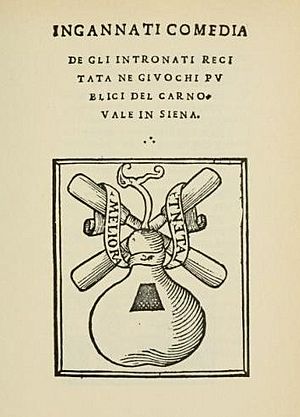Comedy of intrigue facts for kids
A comedy of intrigue is a type of funny play or story. It's also called a comedy of situation. In these stories, the main focus is on exciting events and tricky plans. The plot moves quickly with lots of secrets and clever schemes.
Characters in these comedies are often not very deep. Instead, the story relies on funny, sometimes silly, situations. Things might happen that seem a bit unbelievable. The German thinker Hegel said that characters in these plays often use tricks to get what they want.
Contents
What is a Comedy of Intrigue?
A comedy of intrigue is all about the action. It's not so much about how characters grow or change. Think of it like a fast-paced puzzle. The characters are trying to solve problems or achieve goals. They often use clever tricks and secret plans. This makes the story exciting and full of surprises. The humor often comes from these tricky situations. Sometimes, things get very silly or over-the-top.
Where Did Intrigue Comedies Start?
This type of comedy first appeared a long time ago. It began in the theaters of ancient Rome. Two famous Roman playwrights, Plautus and Terence, helped create it. They wrote plays where characters used clever plans to get out of trouble. Or they used tricks to get what they wanted.
Famous Examples of Intrigue Comedies
Many famous writers have used this style of comedy. Here are some well-known examples:
- The Mandrake (1524) by Niccolò Machiavelli.
- The Italian play The Deceived Ones (1531). No one knows who wrote this one.
- Two plays by William Shakespeare: The Merchant of Venice (around 1596) and "Much Ado About Nothing".
- The Wise Woman of Hoxton (around 1604) by Thomas Heywood.
- Scapin the Schemer (1671) by Molière.
- Plays by Aphra Behn and Thomas D'Urfey also fit this style.
See also
 In Spanish: Comedia de enredo para niños
In Spanish: Comedia de enredo para niños


